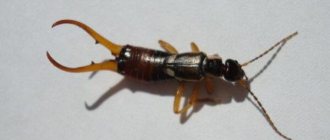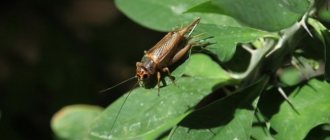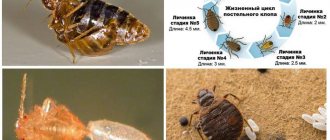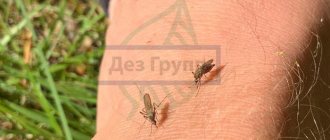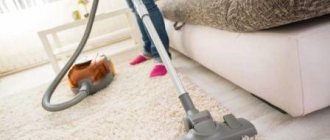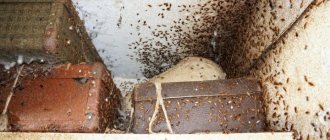Where do flies come from in an apartment and why are they dangerous?
In any apartment, unpleasantly buzzing, impudent and annoying flies appeared more than once as if out of nowhere. Of course, they did not materialize out of thin air, but either flew in on their own or were brought in by someone. The most common options for where flies come from:
- fly through windows, doors, ventilation shafts, sewerage systems, garbage chutes;
- larvae or eggs are brought by household members on purchased or collected vegetables, fruits, and flowers;
- fly eggs may be in the soil for indoor plants;
- larvae or eggs on the fur can be brought by a pet walking near a garbage dump;
- the fly could spend the winter on the balcony or in a secluded place in the apartment.
In hibernation
The danger of house flies is that they carry dirt and bacteria on their bodies and legs, and then leave them wherever they land. Insects carry pathogens such as:
- dysentery;
- cholera;
- typhus;
- tuberculosis;
- anthrax.
In addition, the constant presence of flies in the apartment causes discomfort to its inhabitants.
Using ultrasound
There are many products designed to control insects. However, many of them have a number of contraindications. Therefore, manufacturers are trying to invent a universal remedy that can be used without harm to health. On store shelves you can find devices that do not have negative consequences when used. They are connected to the electrical network and allow you to eliminate muses using ultrasound. The devices are absolutely safe to use and have an aesthetic appearance. They are easy to use and highly efficient. Such devices do not kill flies, but drive them out of a certain space.
The device emits a specific signal at a given frequency, which affects insects. At the same time, domestic animals and humans do not perceive this sound. The device makes a sound that forces flies to leave the room. Thus, repellers can only affect those insects that can communicate through the transmission of sound frequencies. However, flies do not communicate via ultrasound. Therefore, only devices with high power can repel insects. The sound has a detrimental effect on their nervous system, so they leave the human home.
How to get rid of flies in an apartment?
There are quite a few ways to get rid of flies in an apartment. Everyone chooses the most suitable for themselves.
Mosquito net
Mosquito nets are designed not to fight flies, but to protect against them in the warm season. Fine-mesh material allows air to pass through well, but flies cannot enter the room. It is especially useful to equip windows with mosquito nets for residents of apartments on the first floors, as well as for those whose windows overlook an area with garbage bins.
Repellent odors
There are many odors that flies cannot stand and try to get away from them. Smells such as:
- eucalyptus;
- lavender;
- mint;
- carnation;
- myrtle;
- laurel;
- tansy;
- sagebrush;
- basil.
You can use fresh or dried herbs and essential oils. You can also drive out flies using turpentine, vinegar, alcohol, and ammonia.
Fly traps
Absolutely safe for people and animals, but at the same time an effective remedy for flies - traps. They can be purchased at the store or made yourself from scrap materials. Several variants:
- a glass jar into which a paper cone is inserted with the narrow end down (bait is placed at the bottom of the jar);
- a plastic bottle is cut into two parts, the upper one is turned over and inserted into the lower one (water mixed with jam and dishwashing detergent is poured into the bottom of the bottle).
But the simplest and most popular among traps are sticky tapes. This method quickly helps reduce the number of flying flies.
Chemical control methods
If there are a lot of flies in the apartment and you want to get them out as soon as possible, you should use chemicals. Among insecticides there are many effective agents that act on both adults and larvae.
Aerosols
Chemicals are available in the form of:
- aerosols;
- granules or powders for preparing a solution.
Before poisoning flies with insecticidal preparations, you need to study the instructions and follow safety precautions in the process.
Folk remedies for flies
Many people prefer to get rid of flies using folk remedies, since they are natural and do not pose a threat to health. You can prepare poison for flies using one of the following recipes:
- Mix 10 g of honey with 1 g of saccharin, soak strips of paper in the mixture, dry, and then moisten with water and spread in open areas;
- 3 tbsp. l. milk, 5 tsp. soda, 0.5 tsp. formaldehyde (moisten pieces of bread in the mixture).
Another folk remedy for fighting flies is a mixture of milk and black pepper. Saucers with liquid are placed in the kitchen or in the rooms.
Flies are afraid of the smell of geranium, so a pot with this plant will not only become an interior detail, but will also play the role of a repellent.
Professional methods of controlling flies
If you can’t kill the flies on your own, all that remains is to use the most radical remedy, such as calling exterminators. The specialists have experience, modern devices and the most powerful drugs that kill insects after the first treatment.
Features of flies
Flies are arthropod insects from the order of flies and mosquitoes. In nature, there are a sufficient number of species of flies that differ in size: there are flies several millimeters in size, as well as several centimeters. The fly lives for about two months, but during this time it is capable of laying a large number of eggs and causing harm to human health, of course, under certain conditions.
Flies are distinguished by the fact that they have huge eyes consisting of several thousand hexagonal lenses. Thanks to its eyes, the fly sees everything that happens around it. That's why she's so hard to catch. Houseflies live exclusively in human homes and are almost impossible to find in nature. Flies often appear in apartments in summer and autumn. During these periods there is simply no end to them. They behave quite arrogantly and can spoil the mood of anyone.
The housefly's body is brown in color, with brown tints. On top of the head are large eyes and short antennae. The fly is armed with wings and three pairs of legs. The housefly grows up to 8 mm in length, while the males are somewhat smaller in size. The legs have suction cups, which allows the fly to be securely held on any surface, including smooth ones.
The fly has an excellent sense of smell. She can smell food from a great distance. The fly does not disdain anything, but prefers food products in liquid form, including spoiled ones. The fly feeds with the help of a long proboscis, through which food is absorbed in liquid form. The fly first dissolves solid food with its saliva and then sucks it through its proboscis.
Household devices for controlling flies
To combat flies in the apartment, many resort to the help of special devices, such as electric traps and fumigators. You can, of course, use ordinary household appliances. For example, trying to fry insects by running after them with a hairdryer running, or hunting while holding a vacuum cleaner at the ready. But these measures are too energy-intensive and at the same time ineffective.
Electric trap
Electric devices for catching flies and other flying insects are divided into 2 main categories:
- Traps with a fan inside. When insects fly up to the device, they are sucked inside.
- Devices containing a live element inside. When flies approach the light source, they touch the mesh or grating through which the current passes and are killed by an electrical discharge.
Electric trap
Both are equipped with bait. Most often this is an ultraviolet lamp. Most electric traps are designed to control flies indoors, but there are some that work quite effectively outdoors.
Fumigator
The fumigator allows you to get rid of flies quite effectively, especially if its use is combined with other methods. The device operates from the network. As a result of an increase in the temperature of the heating element, a special plate or liquid begins to release a substance into the air that has a negative effect on insects
Chemical methods
A chemical attack is an extreme measure of control, which is resorted to when all previous methods have failed. It involves the use of products that include pyrethroids. They cause paralysis in flies and lead to death. Release form: sprays, powders, aerosols and liquids.
The most effective chemicals:
- Dichlorvos;
- DR. KLAUS;
- Contra Insect Universal;
- Agita;
- Fly Byte.
When deciding to use chemical methods, take precautions. You need to handle them in special clothing. Spray sprays and aerosols only in a respirator. Be sure to wear gloves when handling liquids and powders. After using the products, ventilate the premises.
Tips for housewives
There are several recommendations, following which, you will be able to get rid of flies in your apartment much faster. All of them are aimed at making your home as unsuitable for insects as possible, depriving them of food and the ability to reproduce normally.
Cleaning up after pets
If there are pets in the apartment, insufficient care for them can cause the spread of flies. To avoid this, you must:
- Wash food and water bowls regularly;
- make sure that no stale food accumulates in the bowls;
- keep the feeding area clean, make sure there are no fallen pieces on the floor around the bowls;
- Clean the cages regularly, changing the bedding.
In addition, it is necessary to regularly arrange hygiene procedures for the pet itself.
Garbage storage
Improper storage of garbage provokes the rapid proliferation of flies indoors. It’s worth starting with the fact that you can leave garbage in a bin for no more than a day. The trash must be taken out daily. After this, be sure to wash the bucket. The best option is a bucket with a lid. In this case, the smell of waste will not be so strong, and insects cannot reach it.
Fruit storage
Sometimes you can get rid of small flies just by putting the fruit in the refrigerator. Houseflies and fruit flies flock to the aroma of overripe or beginning to rot fruits, and lay eggs on them. Therefore, fruits and berries purchased or collected in the garden must be carefully sorted, stored in the refrigerator and sorted regularly, throwing away spoiled ones.
What plants repel flies, what is their smell?
In nature, everything is interconnected, and if some plants attract flies, others repel them or even destroy them. Let's take a closer look.
Geranium
The flower contains bactericidal components that flies cannot tolerate. If you place several pots of geraniums on the windowsill or balcony, you will forever forget about the problem of pests.
Venus flytrap
A seemingly harmless flower can not only scare away, but also destroy flies. This is a carnivorous plant that feeds on insects. As soon as a fly lands on an open bud, it immediately slams shut. The “predator” then digests the pest using digestive enzymes. The Venus flytrap cannot cope with a large population, but it is perfect for scaring away and destroying flies that accidentally fly in.
Wormwood, lavender, basil, tansy
Such plants emit toxic substances that flies cannot tolerate. Place a pot with a plant on the windowsill and insects will not have the desire to fly into your apartment.
Cherry
Contact of a fly with the foliage of cherry tomatoes can result in death. When several pots of seedlings appear in your apartment, insects will stop annoying you and will leave your home forever.
Elderberry, fern
The repellent only works if you use fresh fern or elderberry leaves. Fold small bouquets and place them around the apartment. Make sure that these bouquets do not dry out. There will be no effect; on the contrary, insects will be attracted by the smell of dry leaves.
Eucalyptus, myrtle, mint
Flies cannot tolerate refreshing odors. When fragrant plants in pots or simply bouquets collected from them appear in the apartment, insects will leave the home.
Why are flies so difficult to get rid of, unlike other insects?
Getting rid of flies is a long process and not the easiest. The fact is that flies are very fertile, and the maturation process in comfortable conditions takes very little time, so young flies appear in the room almost constantly, and their number only increases.
Reproduction
Another point is that insects lay eggs in secluded places that are not easy to detect. These insects are quite picky eaters; they can feed on scraps, spoiled food, even excrement, so they rarely die of hunger. And finally, flies have acute vision and a wide viewing angle, as well as an amazing sense of smell. They sense danger and fly quickly, so killing a fly is not an easy task.
Questions
Elena, 34 years old, Nizhnekamsk
How to deal with fruit flies in a house where there are children, how to remove them?
Use non-toxic and non-aggressive methods: Velcro tapes, natural poisons, special plants. The flies will die, but household members will not feel any harmful effects.
Tatyana, 45 years old, Volgograd
Does the time of year have anything to do with the fact that a lot of flies suddenly appear in the room?
Yes, insects are especially active in trying to penetrate human housing in the fall, summer and spring.
Peter, 31 years old, Saratov
Should mosquito nets also be installed on wooden home windows?
Yes. If you don't have a suitable size in the store, you can have them made to order. Please note that you can remove the screens only while washing the window frames. In all other cases, they will close the home, ensuring that insects are eliminated.
Preventing the appearance of flies as a way to combat them
Controlling insects in an apartment requires an integrated approach. One of the mandatory points is preventive measures. To prevent flies from becoming permanent neighbors, you need to follow some recommendations:
- maintain cleanliness (regularly do wet cleaning, clean the sink and stove, wash dirty dishes immediately after eating);
- all waste (primarily food) should be immediately placed in a trash bin with a lid, and the bucket should be taken out daily;
- properly organize food storage (groceries in tightly closed glass jars, meat, fish, fruits, vegetables in the refrigerator or freezer);
- monitor the condition of taps, mixers and pipes, eliminate leaks in a timely manner;
- clean the drains of sinks, bathtubs, toilets, prevent the formation of blockages, periodically use a pipe cleaner;
- cover the ventilation holes with fine mesh;
- Do not overwater house plants, empty the trays regularly.
Be sure to keep your pets' bowls and bedding clean.
Mechanical methods
Despite the fact that it is difficult to kill a fly, the mechanical method is often used and consists of using:
- Available materials: rolled up newspaper, slipper, heavy object. The insect is simply flattened by the force of a direct blow.
- Fly swatters. A special plastic device is a stick with a flat silicone or rubber plate at the end.
- Fly nets. It will not be possible to kill a fly with its help, but such an obstacle will not allow the pest to enter the house. It is better to install the mesh both on windows and ventilation holes.
- Adhesive tape. A paper or silicone strip impregnated with a fly-attracting composition is hung on eaves or door (window) openings. Insects land on the sticky surface with their paws and stick. Pests actually die from lack of food and water.
It’s easy to make an analogue of adhesive tape at home. To do this you will need a glass jar, 40 g of castor oil, 1 tbsp. l. honey and 60 g rosin. All ingredients are heated and spread on thick paper or cardboard with a brush. The finished device is placed in a place inaccessible to children and pets.
Homemade Fly Traps (Instructions for Making)
It is not difficult to construct homemade traps; here you can use simple and available tools and materials that can be found in every country house and village house. The most popular and simplest trap is a bottle of liquid. You will need any unnecessary container (a glass or plastic bottle, of course, empty), and as a liquid you can use beer or plain tap water, slightly sweetened. If you want to turn the liquid into real bait, add a little honey, just a few drops. It is recommended to add milk to such traps, but this is an unnecessary measure.
It is best to leave such a trap indoors when you are not at home, and there is no need to isolate the interior - let them flock. Just don’t leave the windows open, you don’t need new visitors.
If the presence of flies has become completely unbearable, preventive measures do not help, and simple means of control do not bring results, you can then use a more radical method - make a special solution that will help destroy flies in the house and will serve as a repellent for quite a long time.
This poisonous trap contains chlorophos (less than a third of a teaspoon) and sugar (about half a teaspoon). Mix them, pour the resulting mixture onto a saucer and place it around the house.
Families and species
Dipterologists today distinguish the following groups:
Calliphoridae (Carrion)
- Calliphora vicina (blue redhead).
- Calliphora uralensis (blue meat).
- Lucilia sericata Mg. and Lucilia illustris Mg. (species of the genus green blowfly).
Area – Russia, Wed. Asia, Caucasus, Europe, North. America. The larvae of some species develop in carrion and cattle burial grounds no more than 1 meter deep, while others develop in cesspools. Adults feed on meat waste, feces, and fruits. You can meet them at bazaars and slaughterhouses.
Piophilidae (Cheese)
Scientists name about 100 species. Distributed everywhere, especially in areas where fishing is carried out. Fish, cheese, lard are the best places for the development of larvae, which grow up to 8 millimeters. If disturbed, they can jump up to 150mm.
Hippoboscidae (Bloodsuckers)
They live everywhere. There are about 800 species. Adult flies are blood-sucking. With paws equipped with serrated claws, they cling to birds, deer, dogs and other animals. Sometimes they attack people, causing skin inflammation.
Sarcophagidae (Grey meats)
Distribution: Europe, Asia, North Africa. There are approximately 3 thousand species. It reproduces on corpses, feces, manure, and food waste. Adult flies eat feces, meat, and fruits.
One of the most dangerous representatives of the family is the Wohlfart fly. She lays larvae on open wounds. By eating living tissue, parasites cause severe pain.
Oestridae (Gadflies)
Pasture insects. Maggots develop on the body of livestock and humans.
- Hypodermatinae (Subcutaneous). Doesn't live only in the Far North. The larvae penetrate the skin into the body and move through the tissues, causing skin lesions.
- Gasterophilinae (Stomach). Lives everywhere. Larvae enter the gastrointestinal tract with food and lead to inflammation of the stomach.
- Oestrinae (Cavity, nasopharyngeal). The larvae enter the mucous membranes, and from there into the pharynx and frontal sinuses, leading to miasma.
Drosophilidae (Drosophila)
Distributed everywhere. Midges can be seen in flower pots and bird nests. There are 1.5 thousand species. They feed on rotting plants. Maggots develop in spoiled vegetables and fruits, compotes, juices: apple, cherry, grape.
The most famous type. There are more than 5 thousand species in the world. The most common in Russia are:
- market;
- autumn fireweed;
- Room, house.

